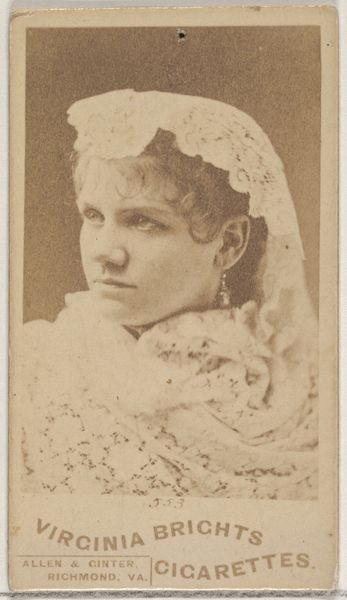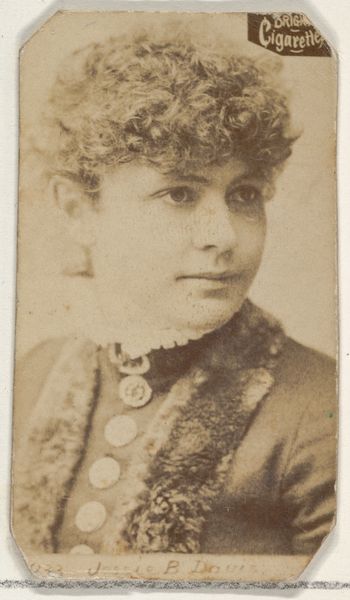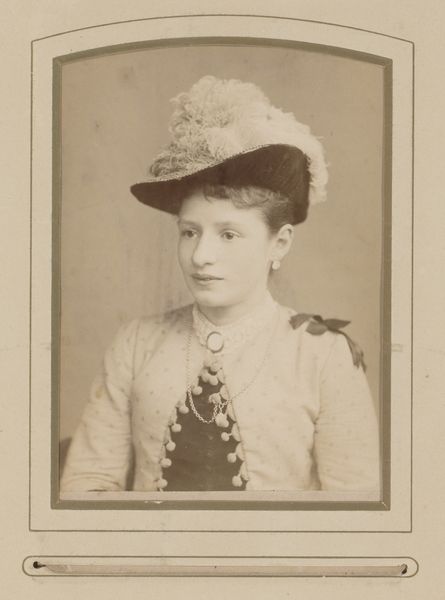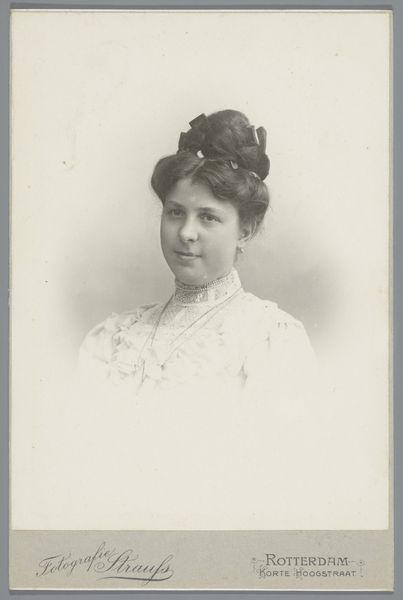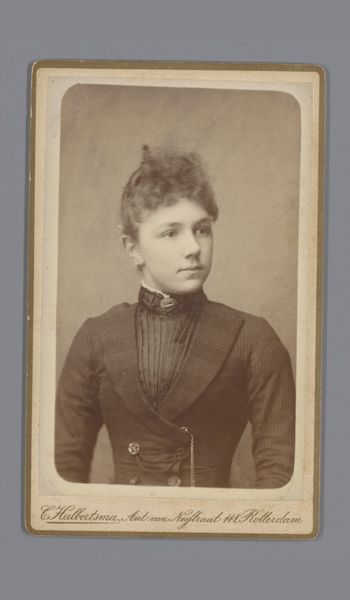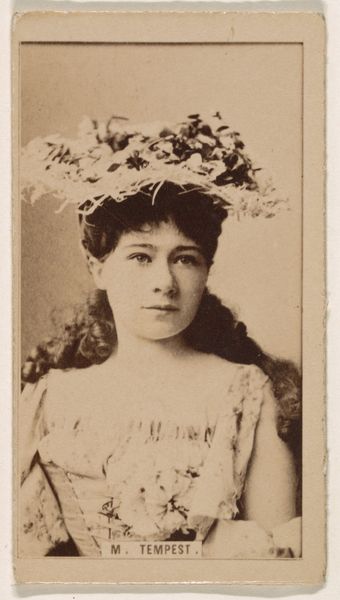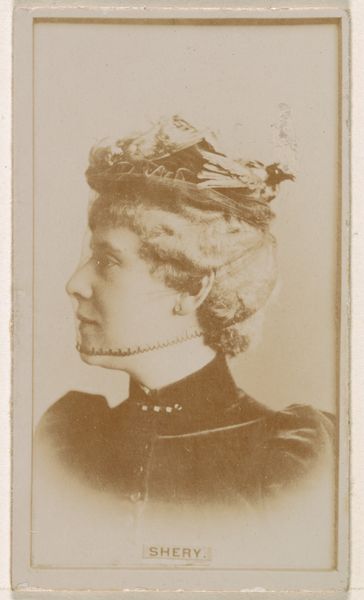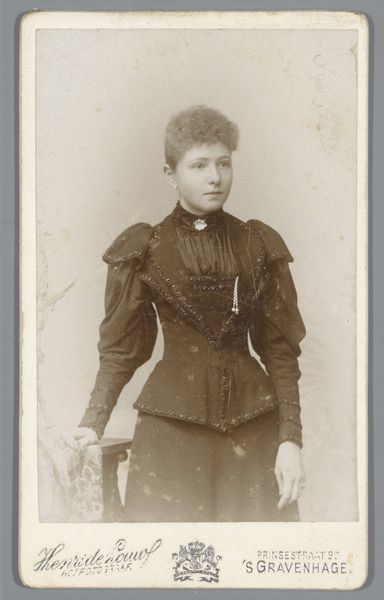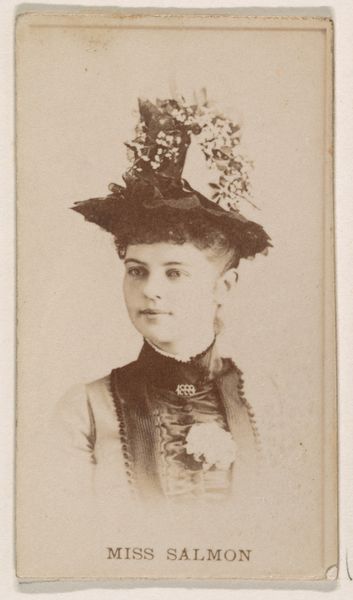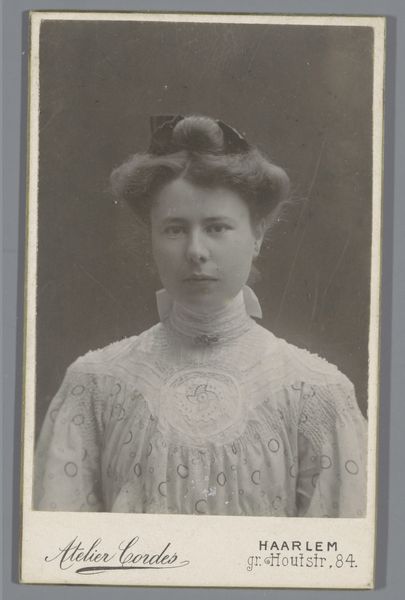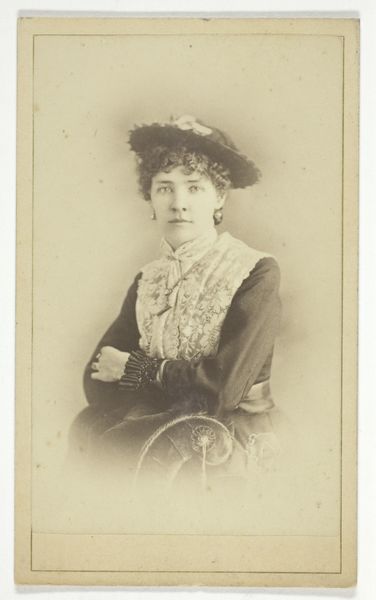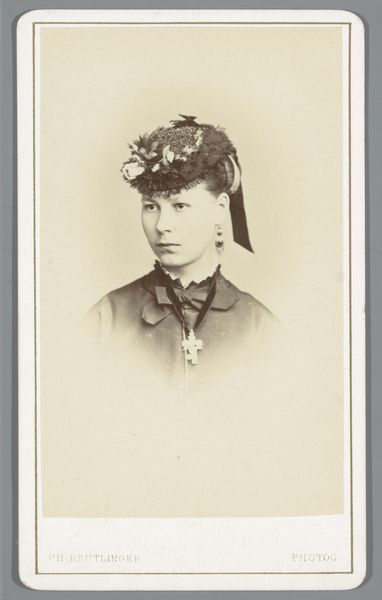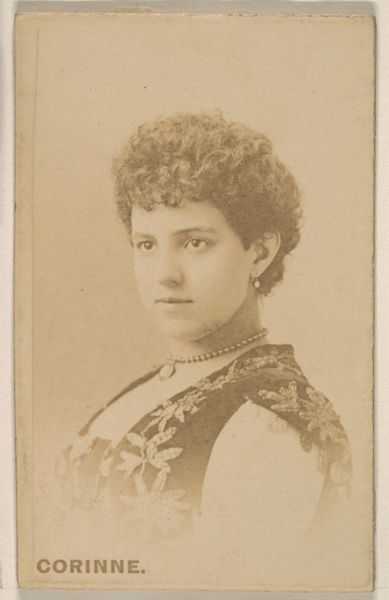
photography, gelatin-silver-print
#
portrait
#
16_19th-century
#
photography
#
historical photography
#
gelatin-silver-print
#
19th century
Dimensions: image: 14.4 × 9.7 cm (5 11/16 × 3 13/16 in.) mount: 16.6 × 10.9 cm (6 9/16 × 4 5/16 in.)
Copyright: National Gallery of Art: CC0 1.0
This is a photograph, "Portrait of a Woman," made by C.W. Nichols, a 19th-century photographer working in Vermont. It's not painted or sculpted, but created through a chemical process using light-sensitive materials. Photography in this era wasn't just about capturing an image; it was a complex craft. The photographer had to prepare the chemicals, coat the plates, expose the image, and develop it, all with precise timing and technique. Looking at this portrait, consider the labor involved in creating the photographic materials themselves. The glass plates, the chemicals, the paper—all required mining, manufacturing, and distribution networks, reflecting the growing industrialization of the era. The photograph's sepia tone, soft focus, and careful composition are not accidental. They reflect the aesthetic preferences of the time, but also the material limitations and possibilities of the process. This wasn't just a snapshot; it was a carefully constructed image, reflecting both the sitter's social standing and the photographer's skill. By understanding the materials and processes, we can appreciate the full meaning of this seemingly simple portrait.
Comments
No comments
Be the first to comment and join the conversation on the ultimate creative platform.
